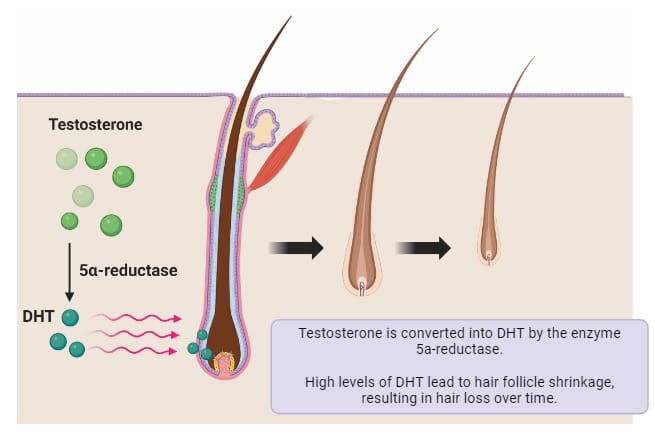A Follicular Unit Excision (FUE) or FUT hair transplant is one of the two main procedures available to address hair loss, helping restore hairlines, temples and crowns in male, female and trans patients.
A key question for patients is how many hair grafts are required to achieve their desired result. To answer this question, it’s crucial first to understand what hair transplants involve by taking a more detailed look at the factors that can impact the calculation.
Calculating how many hair grafts for different areas
Different regions of the scalp require different numbers of hair grafts, depending on the type of look that’s trying to be achieved.
When calculating the number of hair grafts required, it’s important to consider the requirements and guidelines for each of these distinct regions.
To help with this, the Norwood Scale has been designed to analyse the extent of hair loss in patients.
Comprised of seven progressive stages, this scale assesses each patient’s current stage of hair loss, making it easier to make an accurate diagnosis and provide a rough estimate of how many hair grafts will be required.

The Norwood stage that a patient fits into will not only vary depending on where the main areas of hair loss are, but it will also influence the number of hair grafts required:
- Hairline and temples – to create a more natural-looking hairline towards the front of the head, typically requires anywhere between 500 and 1,800 hair grafts.
- Mid-scalp – moving further back, somewhere between 500 and 1,500 hair grafts will be needed to address hair loss within the middle of the head.
- Crown – also known as the vertex, restoring hair loss in this area towards the back of the head will usually involve between 1,000 and 2,500 hair grafts.
Generally speaking, achieving a sufficient level of density across the front, mid-scalp and crown regions of the head during an FUE hair transplant will require an average of 4,000- 6000 hair grafts. It’s important to note that not every patient will be able to have such extensive surgery and therefore careful planning in a consultation with a dedicated Surgeon.
| Norwood Scale | Operation Needed? | Location | Number Of Grafts |
|---|---|---|---|
| 1 | No | N/A | 0 |
| 2 | Yes | Temples | 500 – 800 |
| 2a | Yes | Centre | 500 – 800 |
| 3 | Yes | Front and temples | 1000 – 1,700 |
| 3a | Yes | Front and crown | Front: 1000 – 1,700 Crown: 500 – 1000 |
| 4 | Yes | Front and crown | Front: 1,500 – 1,800 Crown: 800 – 1,100 |
| 4a | Yes | Front | 1,700 – 2,500 |
| 5 | Yes | Front and crown | Front: 1,800 – 2,200 Crown: 1000 – 1,500 |
| 5a | Yes | Front and crown | 2,500 – 3,200 |
| 6+ | Yes | Front and crown | Front: 1,800 – 2,500 Crown: 1,500 – 1,700 |
How to calculate your grafts: Hair Transplant Graft Calculator
Here at The Treatment Rooms London, we understand how difficult it can be to determine the number of grafts required for a hair transplant procedure.
That’s why we have created our hair graft calculator – an interactive solution that takes various factors into account, such as your age, gender, hair colour, hair type, and hair loss area, to determine the number of grafts required from patient to patient.
Factors that affect how many hair grafts are needed
When calculating the number of hair grafts required for a successful hair transplant, there is unfortunately no one-size-fits-all solution.
Several factors can influence the overall look, feel and success of a hair transplant, and will need to be individually considered by a specialist before your procedure.
Balding pattern
One of the key factors to consider when calculating the number of hair grafts required is the extent of hair loss and balding pattern.
These can vary drastically from individual to individual, with different balding patterns requiring varying numbers of hair grafts to resolve the issue.
Individuals with minor hair thinning will typically require much fewer grafts than those with advanced baldness or a condition like male pattern baldness, for instance.
Donor area availability
The size, health and availability of hair follicles in the donor area – usually located at either the back or sides of the head – can be a limiting factor for some patients. Patients with a larger donor area, for example, can typically extract more grafts and have greater flexibility in achieving their desired results from an FUT or FUE hair transplant.
Hair characteristics
The colour, thickness and texture of your hair can all impact the number of hair grafts required for a hair transplant. Having thicker or curlier hair is usually an advantage, as it provides better coverage while also requiring fewer grafts to achieve a denser look and feel.
Patient goals for their hairline, temples or crown
If a patient wants to achieve a thicker outcome, then this will also affect the number of hair grafts required. Conversely, adopting a more conservative, subtle approach when undergoing a hair transplant typically requires fewer hair grafts than someone opting for a more dramatic transformation.
Hair transplants and graft number examples
Below, we will provide examples of levels of hair loss and the graft numbers patients have had when undergoing surgery. We have a full gallery of our hair transplant before-and-after photos, viewable here: hair transplant before and after pictures.
500- 1000 grafts for minimal hair loss
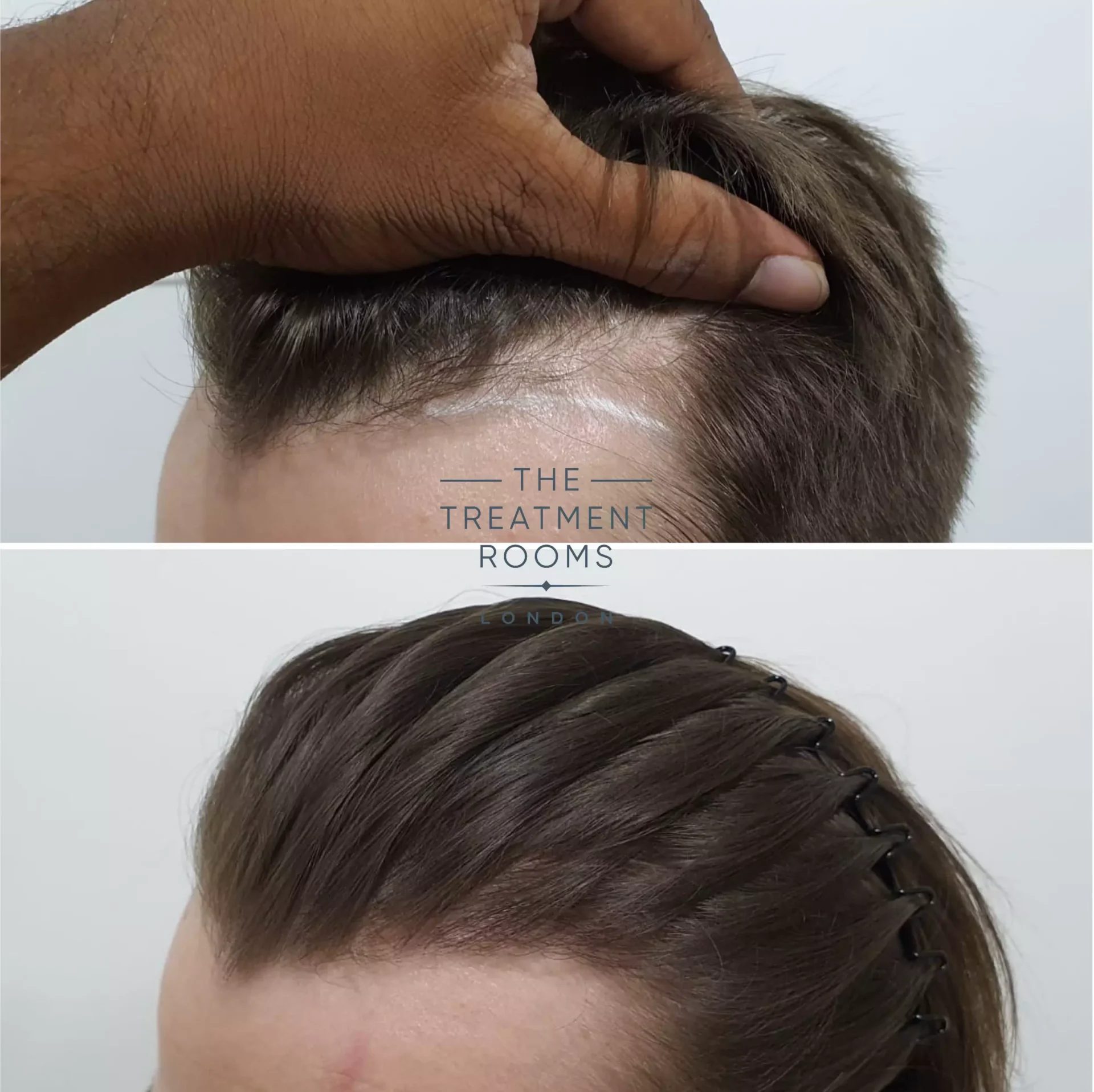
This patient had a small area of recession in his temples. He required 600 grafts for his transplant with his before and after shown above.
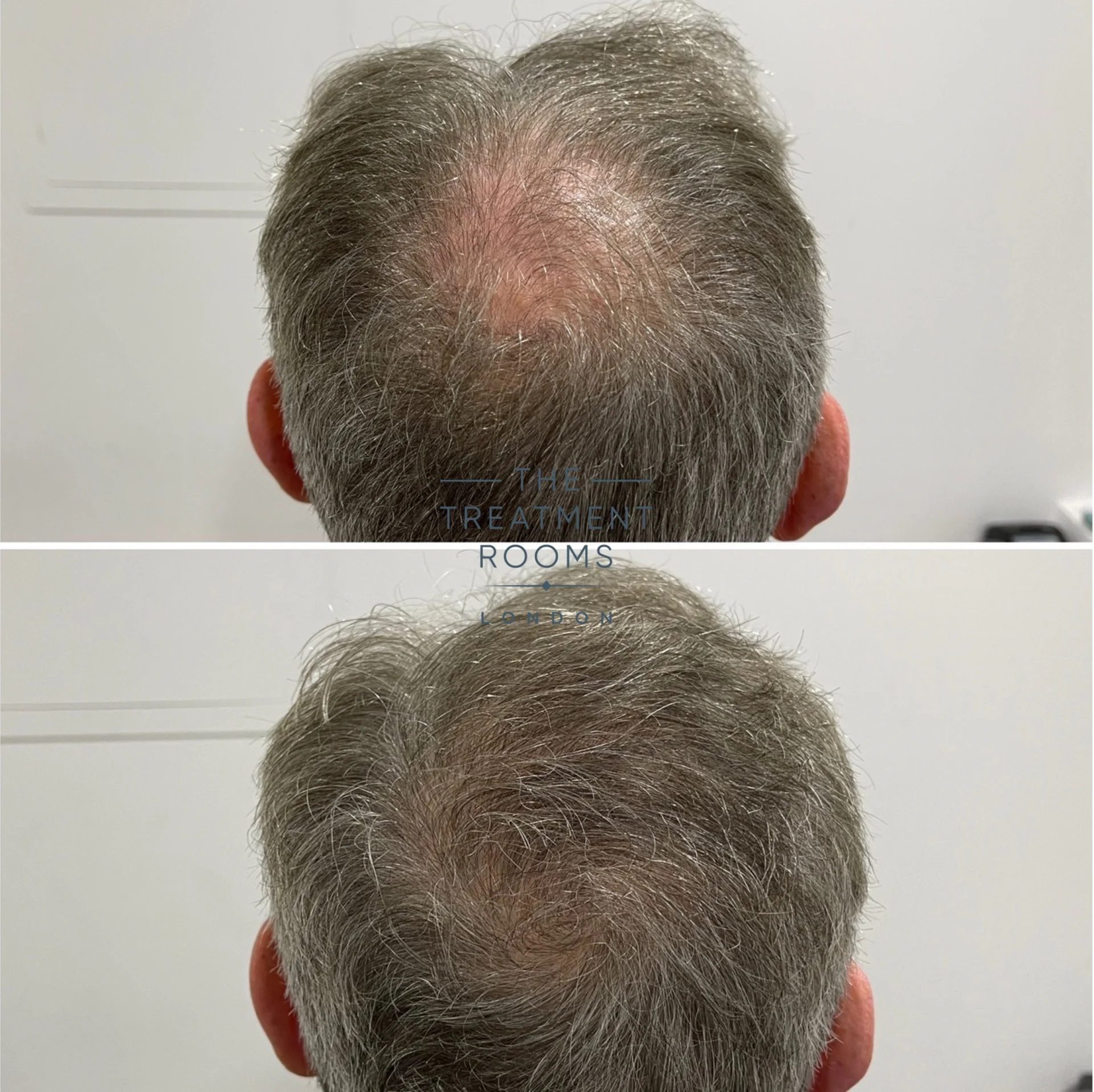
This patient had a small area of thinning in his crown. He required 681 grafts for his transplant with his before and after shown above.
1000- 1500 grafts for mild to moderate hair loss
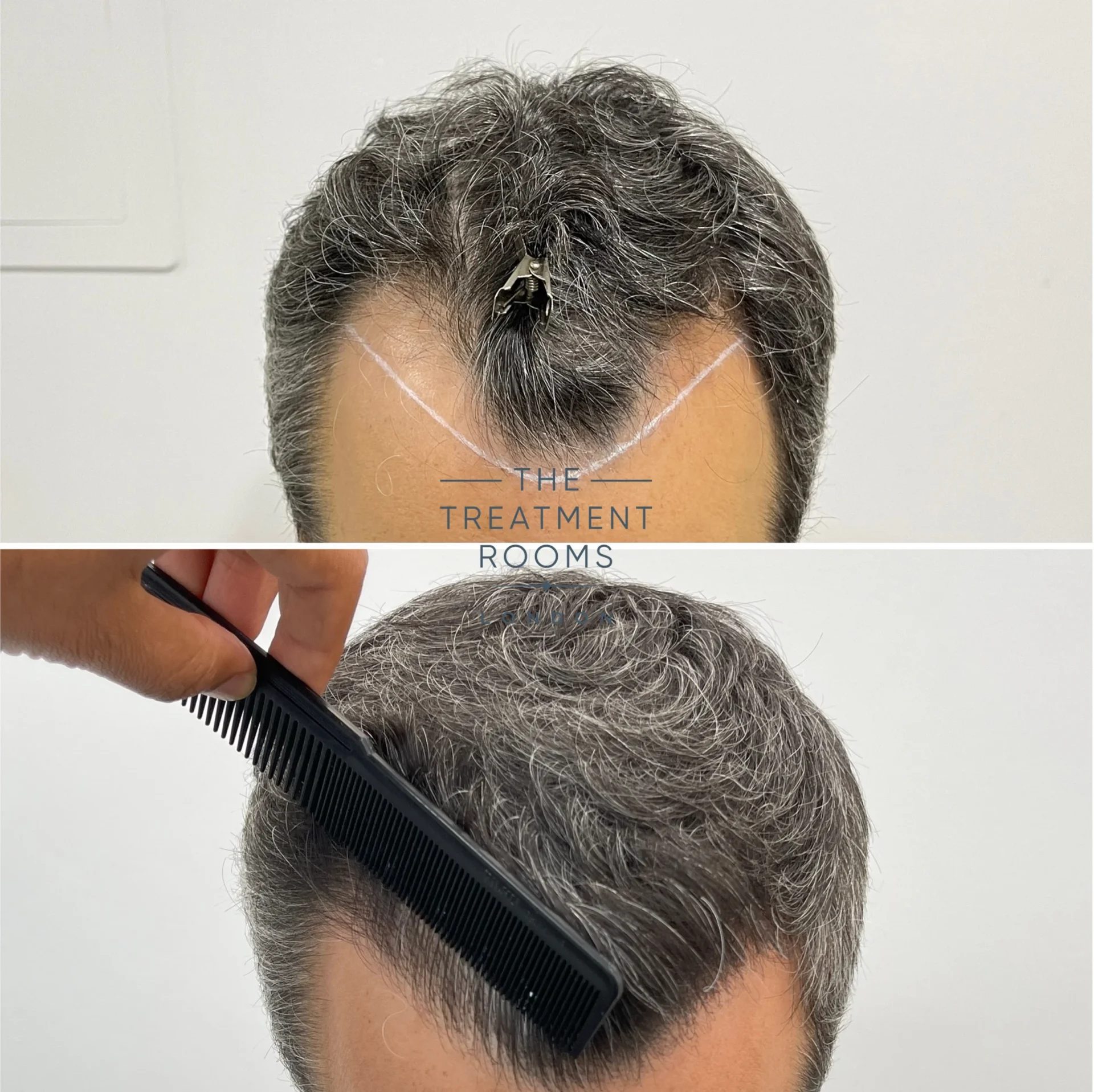
This patient had a mild level of recession in his hairline. He required 1318 grafts for his transplant with his before and after shown above.
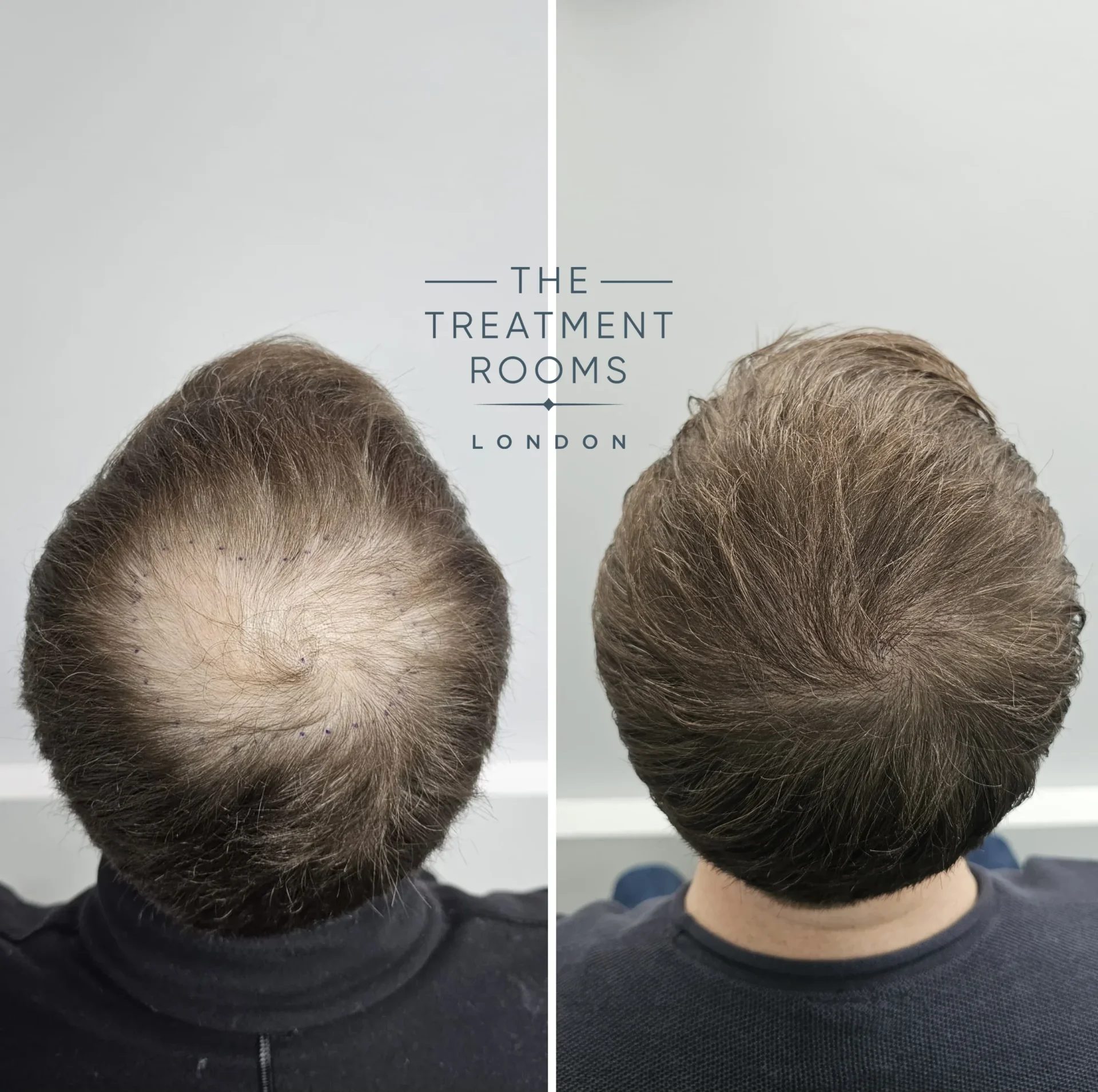
This patient had a moderate level of balding in his crown. He required 1380 grafts for his transplant with his before and after shown above.
1500- 2000 grafts for moderate-severe hair loss
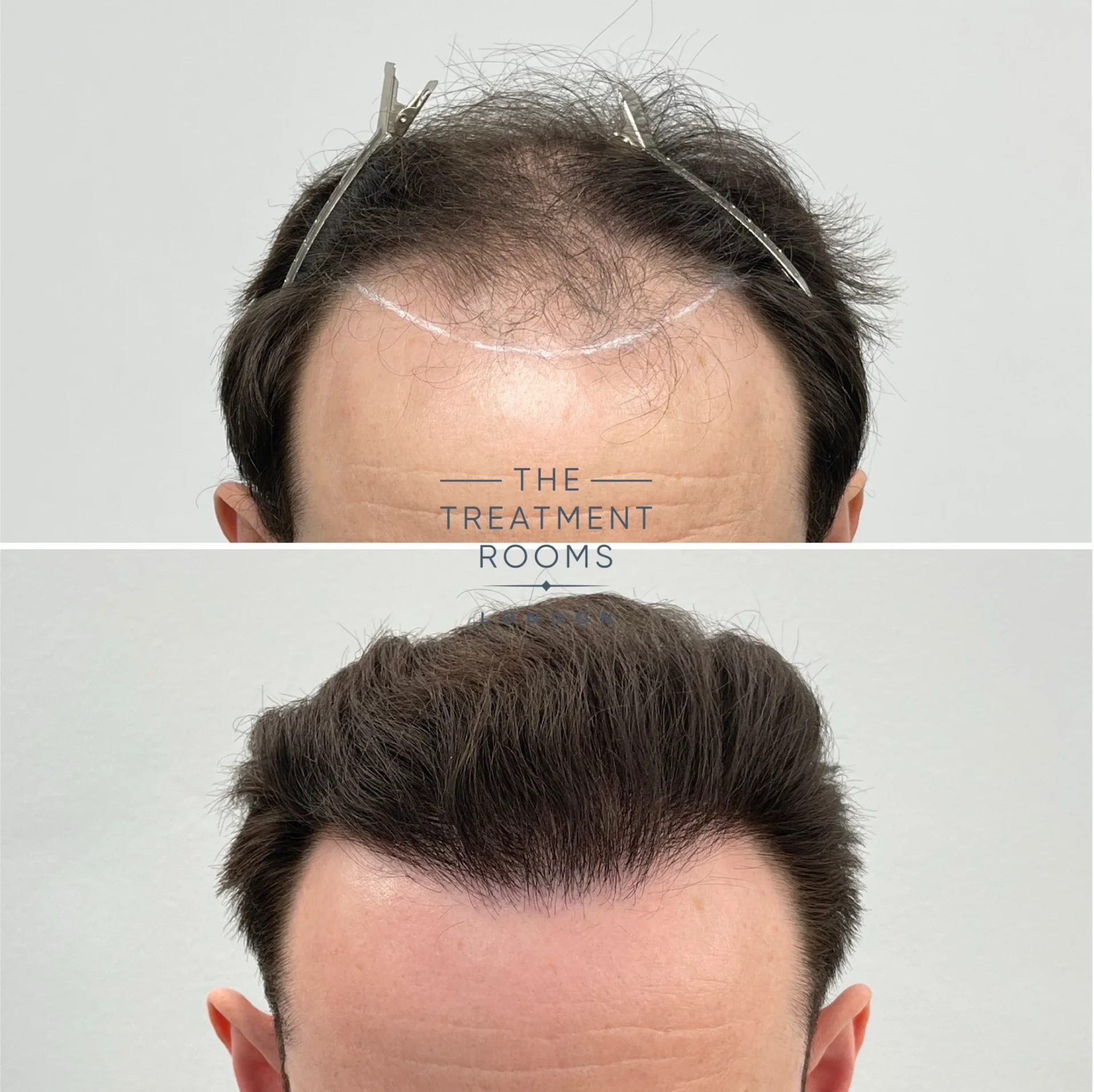
This patient had a moderate to severe level of recession in his hairline. He required 1960 grafts for his transplant, with his before and after shown above.
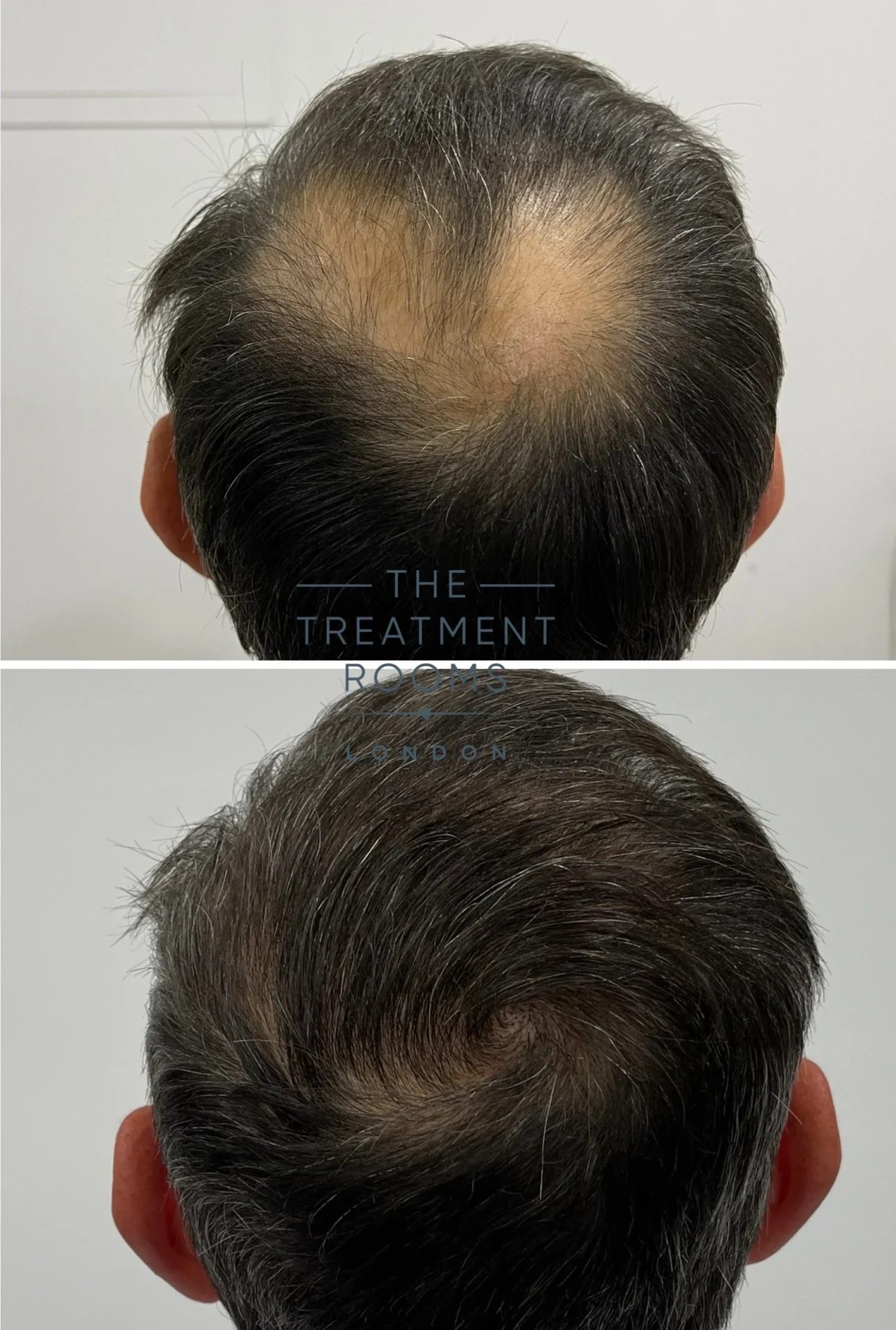
This patient had a moderate to severe level of balding in his crown. He required 1877 grafts for his transplant, with his before and after shown above.
>2000 grafts for severe hair loss

This patient had a severe level of recession in his hairline. He required 2247 grafts for his transplant, with his before and after shown above.
Realistic expectations and desired results
Having a hair transplant can produce potentially life-changing results, with research showing that FUE hair transplants specifically can successfully common conditions like male and female pattern baldness, as well as rarer issues like cleft lip scars, burns and surgical scars4.
However, it’s crucial for patients to maintain realistic expectations both going into it and afterwards as well, by bearing a few key points in mind:
- Hair transplants can achieve natural-looking results; however, FUE and FUT transplants are not designed to give you a full head of hair like you had in your youth. They are there to provide patients with a more natural hairline ,but not the exact density as before.
- Initial consultations are vital – arranging a consultation with a hair transplant Surgeon is a crucial first step, providing you with an opportunity to calculate the number of grafts you need and set more realistic expectations about what can be achieved. There should not be any salespeople involved in making surgical decisions.
- Multiple sessions could be required – hair transplants are not always a ‘one-and-done’ type of procedure. Depending on the extent of hair loss, achieving full coverage may require multiple sessions and might not provide immediate results.
- Correct maintenance is key – FUE and FUT transplants are not designed to stop the progression of hair loss. Therefore, you may need to consider using other non-surgical hair loss treatments, such as finasteride or minoxidil, to maintain the results over the long term.
- Patience is crucial – the results of an FUE transplant take time and vary from person to person. It can take several months to see the full results, so it’s essential to be patient, utilise your surgeon’s advice and stick to their recommended maintenance plan.
FAQs on hair graft calculations
Here at The Treatment Rooms London, our patients often ask us questions about what’s involved in the FUE hair transplant procedure, particularly regarding the number of hair grafts they are likely to need.
Here are some of the most common questions we get asked.
What is the best way to work out the number of grafts required for an FUE transplant?
Calculating the correct number of grafts required for an FUE hair transplant varies depending on several factors, including the total area that needs to be covered, the desired hair density, and the patient’s specific hair characteristics.
While tools like our hair graft calculator can estimate how many grafts you’ll need, each patient is different. Therefore, arranging a consultation with a hair transplant specialist is the best way to find out how many hair grafts you will need to achieve your specific aims.
What factors can affect the accuracy of my hair graft calculation?
Providing an accurate estimate of the number of hair grafts you need will depend on specific characteristics of your hair, such as its thickness, texture and colour.
It will also depend on the skill and knowledge level of your surgeon, as well as the overall size and quality of the donor area available for use.
Can I achieve the same density as my original hair with an FUE hair transplant?
Achieving the same density as your original hair with an FUE hair transplant can be challenging, as it depends on factors such as the availability of donor hair and the extent of baldness.
While an FUE hair transplant can provide excellent results, it often doesn’t replicate the exact density of your original hair. Therefore, it’s essential to discuss with your hair transplant surgeon what can and can’t be achieved.
How important is the condition of the donor area in calculating the number of hair grafts required?
The health and condition of the donor area are crucial during graft calculation, as they can significantly impact the number of hair follicles available for transplantation.
Put simply, having a healthy donor area with an adequate follicle supply is essential for achieving a successful and natural-looking result from a hair transplant.
Are graft calculations different for men and women?
The number of hair grafts required can differ between men and women due to subtle variations in hair loss patterns and donor areas.
Men typically experience male pattern baldness, for example, which often requires more grafts, whereas women may have different hair loss patterns that necessitate more specific types of hair graft calculations.
Are there any risks associated with overestimating or underestimating the number of grafts?
Yes, there are several risks associated with both overestimating and underestimating the number of hair grafts required for an FUE hair transplant.
Overestimating can lead to donor depletion, excessive scarring and an unnatural appearance, while underestimating can result in inadequate coverage and lower hair density, which can then impact the overall results6.
This, therefore, highlights the importance of consulting a hair transplant specialist.
Are there any online tools that can help calculate the number of grafts I need?
Yes, our interactive hair graft calculator has been created for this exact reason. By taking into account your age, gender, hair colour, hair type, and area of hair loss, we can then determine the number of grafts you will need.
Book a consultation for an accurate graft calculation
Determining the number of hair grafts needed for an FUE hair transplant is a complex process that requires carefully considering several factors.
While it may be natural to want to restore your hairline or crown to its best, it’s equally important to have realistic expectations and understand that achieving a natural appearance is the primary goal of an FUE hair transplant.
Here at The Treatment Rooms London, we have helped thousands of patients achieve successful outcomes with their hair transplant.
FAQs
1. How many grafts are typically needed to address male pattern baldness?
The number of grafts you would need usually depends on the extent of hair loss as indicated on the Norwood scale. Generally:
- Norwood 2–3: ~800–1,700 grafts to restore the hairline and temples
- Norwood 4–5: ~1,500–2,200 grafts for the front, with an additional 800–1,500 for the crown
Norwood 6–7: 2,000–3,500 grafts (or more), and is often done in multiple sessions to achieve full density and a natural look. The maximum number of grafts that can be safely extracted in one session is usually 2,200.
2. What graft count should women expect for diffuse thinning?
Diffuse hair thinning in women, caused by female-patterned hair loss, typically requires addressing a broader area to add some density. However, fewer hairs per square centimetre is needed to create a natural look in women compared to men. The graft number needed may look something like this:
- Mild thinning: 500–1,200 grafts, focusing on frontal and mid-scalp coverage
- Moderate thinning: 1,200–2,000 grafts, adding density across the top and crown
- Advanced diffuse loss: 2,000–3,000 grafts, potentially over two sessions to protect the donor area.
3. How many grafts are needed for receding temples?
Receding temples alone tend to be more conservative in graft numbers:
- Early hair loss (Norwood 2–2a): 500–800 grafts on either side of the temple
- Norwood 3: 1,000–1,200 grafts may be needed in total to rebuild a natural-looking hairline.
4. What is the graft estimate for crown balding?
The crown area requires the highest graft counts due to its wider surface area:
- Minor thinning: 800–1,200 grafts
- Moderate balding: 1,200–1,800 grafts
- Severe balding: 1,800–2,500 grafts, which may sometimes require two sessions.
5. How many grafts are needed for Norwood Stage 4?
Both the frontal and crown areas are involved at this stage, so this rate of hair loss would ideally require more grafts in total to address both areas:
- Frontal area: 1,500–1,800 grafts
- Crown area: 800–1,100 grafts
Total Grafts Needed: 2,300–2,900 grafts, with careful planning to maximise donor area, while preserving it for future hair transplant sessions if needed.
6. What’s the average number of grafts per FUE session, including graft density per cm²?
- For a typical FUE procedure, you may require approximately 1,500–2,500 grafts, which will be transplanted over 6 to 8 hours.
- For procedures requiring higher coverage and density, up to 3,000–4,000 grafts may be necessary. This needs to be planned around the donor area’s health and availability, and preventing over-harvesting.
- A general guideline for the density is 30–45 follicular units per cm², which helps create a natural-looking fullness.
Get in touch
Curious about FUE hair transplant solutions? Secure your no-obligation call with our London hair transplant clinic, or head to our FUE hair transplant clinic in Bristol. We’re also proud to support patients in Oxford and Brighton.
Our award-winning team, including leading London hair transplant surgeons Dr Fernando and Dr Vara, is here to support you every step of the way.
References
- Collins, K. & Avram, M. (2021). Hair Transplantation and Follicular Unit Extraction. Dermatol Clin. 39(3): 463 – 478. Available at: https://www.sciencedirect.com/science/article/abs/pii/S0733863521000231?via%3Dihub
- Dua, A. & Dua, K. (2010). Follicular Unit Extraction Hair Transplant. J Cutan Aesthet Surg. 3(2): 76 – 81. Available at: https://www.ncbi.nlm.nih.gov/pmc/articles/PMC2956961/
- Chouhan, K., Roga, G., Kumar, A. & Gupta, J. (2019) Approach to Hair Transplantation in Advanced Grade Baldness by Follicular Unit Extraction: A Retrospective Analysis of 820 Cases. J Cutan Aesthet Surg. 12(4): 215 – 222. Available at: https://www.ncbi.nlm.nih.gov/pmc/articles/PMC6967160/
- Sharma, R. & Ranjan, A. (2019). Follicular Unit Extraction (FUE) Hair Transplant: Curves Ahead. J Maxillofac Oral Surg. 18(4): 509 – 517. Available at: https://pubmed.ncbi.nlm.nih.gov/31624428/
- Zito, P. & Raggio, B. Hair Transplantation [Updated 2023 Feb 14]. In: StatPearls [Internet]. Treasure Island (FL): StatPearls Publishing; 2023. Available from: https://www.ncbi.nlm.nih.gov/books/NBK547740/
- Kerure, A. & Patwardhan, N. (2018) Complications in Hair Transplantation. J Cutan Aesthet Surg. 11(4): 182 – 189. Available at: https://www.ncbi.nlm.nih.gov/pmc/articles/PMC6371733/
Share:
Authored by
Reviewed by
Book a Consultation
Related Blogs
Hair Loss Treatment That Works: A Complete Guide for 2025
October 3, 2025
Millions of men, women, and teenagers have hair loss problems. In 2025, hair restoration is going through…
What is an FUE Hair Transplant?: A Comprehensive Guide to Procedure, Recovery, and Results
October 3, 2025
Hair transplant surgery has gained popularity over the years, with more people now comfortable taking care of…
Does Omega-3 Deficiency Cause Hair Loss? Evidence, Mechanisms & Nutrition Guide
September 16, 2025
Omega is an essential fatty acid required for a healthy body, skin and scalp. Modern-day diets are…
When Can You Use Nizoral After a Hair Transplant?
September 12, 2025
Nizoral is a medicated shampoo that contains the antifungal drug ketoconazole. This shampoo acts against fungal infections…
When Can You Safely Use Oil After a Hair Transplant? Expert Timeline & Tips
September 10, 2025
There is simply something about running your fingers through hair that is healthy and well-nourished. Hair oils…
Which Medications Cause Hair Loss?
August 20, 2025
Medicines are essential in treating diseases, enhancing health, and even saving lives. While medicines can be very…
Does Vitamin C Deficiency Cause Hair Loss? Causes, Evidence & Nutrition Guide
August 20, 2025
Vitamin C, also known as ‘ascorbic acid’, is one of many critical water-soluble vitamins that play various…
Can Dry Shampoo Cause Hair Loss? Risks, Research & Safe Use
August 20, 2025
Dry shampoo is a time-saving staple for oily roots and no-wash days, but does this convenience come…
Does Saw Palmetto Work for Hair Loss? Evidence, Benefits and Side Effects
August 18, 2025
Male pattern or female pattern baldness, scientifically known as androgenetic alopecia (AGA), is a type of hair…



